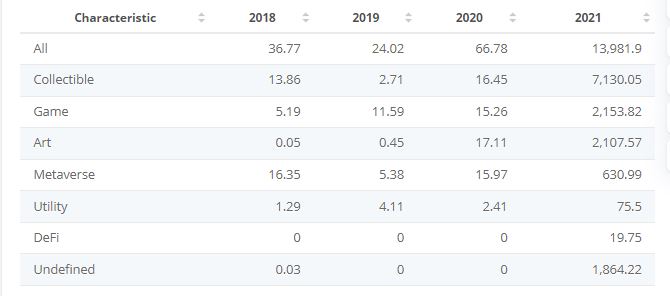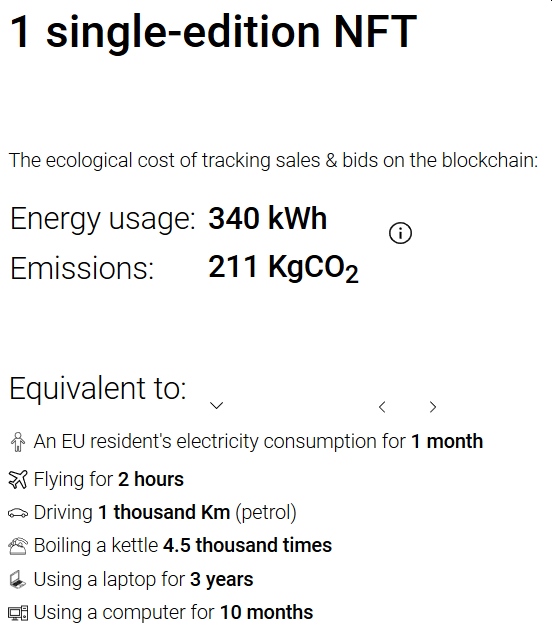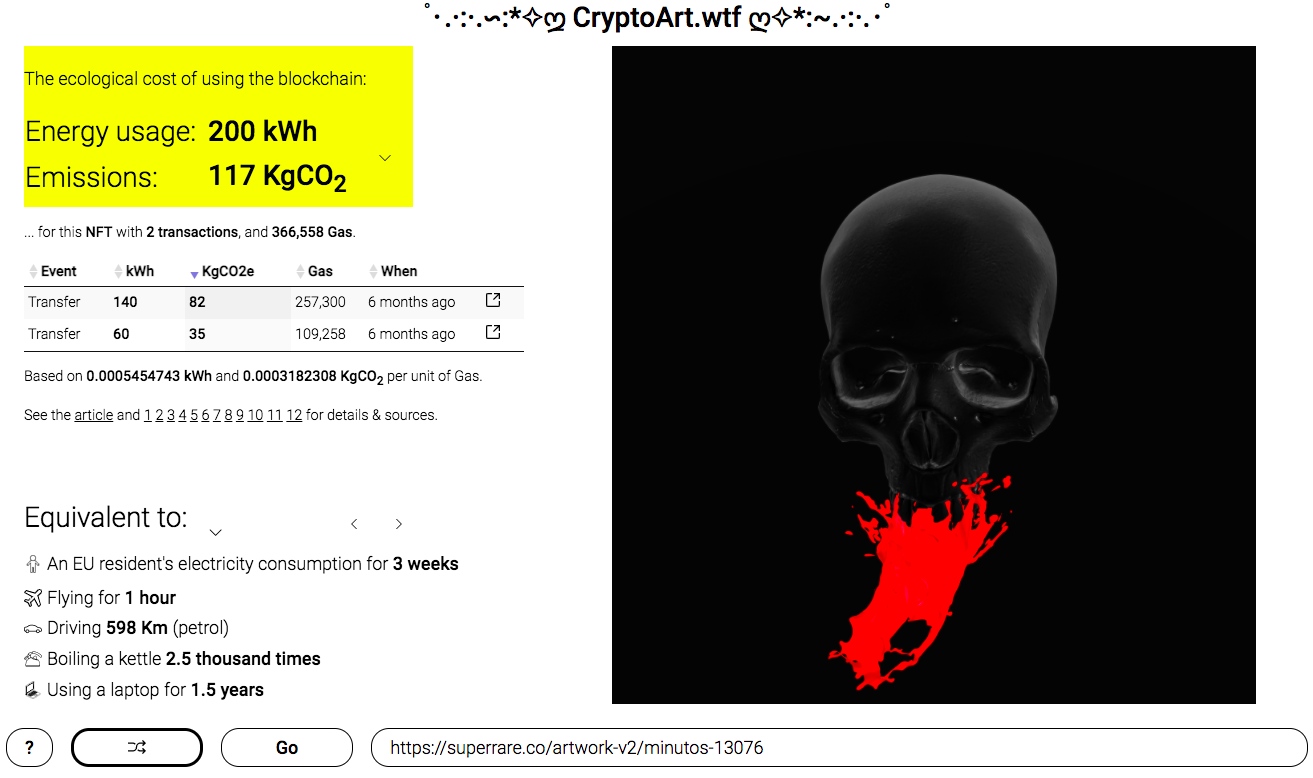Are NFT’s bad for the environment?

On August 7, 2015, Terra Nullius minted what’s now widely believed to be the first non-fungible token (NFT) on the Ethereum blockchain. According to a post on Reddit, it appears that Nullius built the project to allow users to stake their ‘claim’ on the blockchain.
Since then, the NFT-fueled craze has taken the internet by storm and NFT has grown from an obscure personal project to a $35 million market in 2018, according to Statista. Fast forward two years later, NFT grew from under $100 million in 2020 to surpass $40 billion in 2021. The NFT market cap is now forecast to reach over $80 billion for 2025, according to investment bank Jefferies.

Credit: Statista
The popularity of NFTs continues to rise as the line between the digital and physical worlds begins to blur. As Jefferies said in an analyst note, NFTs now allow brands to expand their reach into “digitally-enabled experiential tie-ins.”
For those of you who’re new to the NFT world, NFT is a type of cryptographic token that lives on a blockchain network. The token is a representation of a unique digital asset. This asset can either be entirely digital assets or tokenized versions of real-world assets. Because NFTs are not interchangeable with each other, they may function as proof of authenticity and ownership within the digital realm, for example as proof of the authenticity of rare art.
However, with all the hype surrounding NFT, there is a dark side of it that has not received much scrutiny about NFT’ss impacts on the environment. The good news is that people are now beginning to ask questions if NFTs are harmful to the environment.
Early last year, as the hype around NFTs began to mushroom, a segment of the art community came out in protest against the environmental impact of NFTs. One prominent artist, Joanie Lemercier, announced he was pulling a planned NFT drop on NiftyGateway due to the “insane and unnecessary waste involved.”
Despite the campaign, the NFT market has continued to thrive. But the grim reality is that the underlying problem hasn’t gone away. There’s still a significant amount of activity taking place on Ethereum as a base layer, and according to Digiconomist, Ethereum’s energy consumption increased nearly seven-fold in 2021. Ethereum now has a carbon footprint the size of Sweden, with the average Ethereum transaction consuming the same energy as the average US household needs for over eight days.
So, are NFTs bad for the environment? To really answer the question, we first have to understand how NFTs are created, how blockchain and Ethereum works, and how NFTs are minted (or created)
The vast majority of NFT tokens were built using one of two Ethereum token standards (ERC-721 and ERC-1155). The creation and issuance of NFTs are also governed by various standard frameworks. The most prominent one is ERC-721, a standard for the issuance and trading of non-fungible assets on the Ethereum blockchain.
First, Bitcoin, Ethereum, and other major cryptocurrencies use a consensus algorithm known as Proof-of-Work (PoW) to secure their blockchain networks. The PoW requires a miner to solve a complicated algorithm to verify transactions within a block. This allows information to be stored in a distributed, decentralized manner across many nodes in a network (e.g. The Internet) while remaining secure, reliable, and dispute-free. (There are alternatives to PoW which are far more efficient, but PoW is currently the most widely used).
However, the Proof of Work process is also the principal cause of high energy requirements as it is used to validate blockchain transactions, which can include NFT purchases and sales. For example, the energy amount of energy required to create a token (also called “NFT drop”) is 340 kWh. That’s equivalent to the same amount of energy used by an EU resident for about one month or a laptop’s energy consumption over the course of 1.5 years.
In December 2020, computational artist and engineer Memo Akten launched a website called “CryptoArt.wtf” that calculates the energy usage and CO2 emissions of any NFT on SuperRare, NiftyGateway, or any given URL with an ETH address.
Based on the data collected, Akten found that the average NFT transaction had a bloated footprint of 76kWh, and taking all of the transactions related to a single NFT into account, the average NFT had a footprint of around 340 kWh (or “an EU resident’s total electric power consumption for more than a month”).

This new revelation has caused digital art creator Ten Hundred to abandon his first digital art video after he found out how harmful NFTs are to the environment.
As Akten also explained, a single NFT can involve many transactions. These include minting, bidding, canceling, sales, and transfer of ownership. If we were to break down the footprint by transaction type, we get the following
Minting: 142 kWh, 83 KgCO2
Bids: 41 kWh, 24 KgCO2
Cancel Bid: 12 kWh, 7 KgCO2
Sale: 87 kWh, 51 KgCO2
Transfer of ownership: 52 kWh, 30 KgCO2
This generally pushes the footprint of a single NFT into hundreds of kWh, and hundreds of KgCO2 emissions, and often higher. Akten also analyzed about 80000 transactions relating to ~18000 NFTs on the CryptoArt NFT marketplace SuperRare (which is just one of many CryptoArt NFT platforms). Of the ~18000 CryptoArt NFTs that he analyzed, the average NFT has a footprint of around 340 kWh, 211 KgCO2.
How to Solve NFT Energy Problem
So how do we solve the NFT energy problem? The single most effective way to reduce the carbon footprint of NFTs is to move transactions off Layer 1 (L1) platforms using proof-of-work. Until Ethereum’s move to proof-of-stake is completed, hopefully, later this year, this means reducing dependency on Ethereum, for which there are two possible solutions. Users can either use NFT services available on other L1 blockchains or one of the highly scalable and effective Ethereum Layer 2s.





